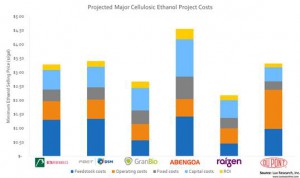
Your eyes do not deceive. I paid $1.40 per gallon for ethanol-blended fuel on Thursday, February 18, 2106 in Fairfield Glade, TN. Photo credit: Joanna Schroeder
As I pulled into a gas station in Fairfield Glade, Tennessee last week I couldn’t believe the price per gallon of fuel with ethanol. After nearly $5.00 per gallon of gas a few years ago in states such as California, I never thought I’d see prices drop below $2.00. But they have and continue to stay. While this is great news for drivers, Big Oil is not too happy about the billions of dollars they are losing with cheap oil. Crude Oil prices have fallen 23 percent in 2016, and 70 percent in the last 20 months – prices the world hasn’t seen in more than a decade.
According to AAA, the national average for gas this week is $1.70 per gallon – 55 cents less than this time last year. Interestingly, anti-biofuel advocates are using cheap oil as a call to end the Renewable Fuel Standard (#RFS) and stop blending corn-based ethanol into our nation’s fuel supply.
Professor Bruce Babcock of Iowa State University says oil companies are making “thoroughly outrageous claims” about what it would cost them, and you, to keep up with the plan to reduce greenhouse emissions. In his paper “Compliance Path and Impact of Ethanol Mandates on Retail Fuel Market in the Short Run,” co-authored by Sébastien Pouliot of Iowa State, Babcock found the impact on consumer prices is “close to zero.” This paper was recently selected to be published in the American Journal of Agricultural Economics.
“One of the reasons for writing this paper was to debunk the myths for justifications of getting rid of the RFS,” Babcock said. “This takes one of the justifications away.”











